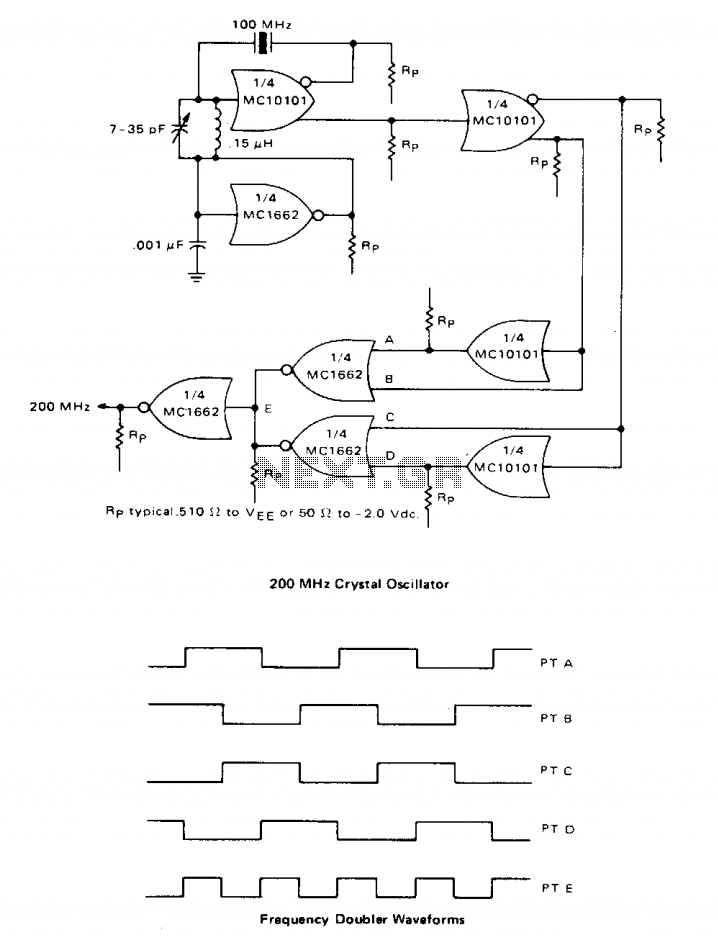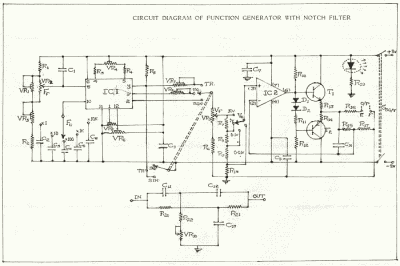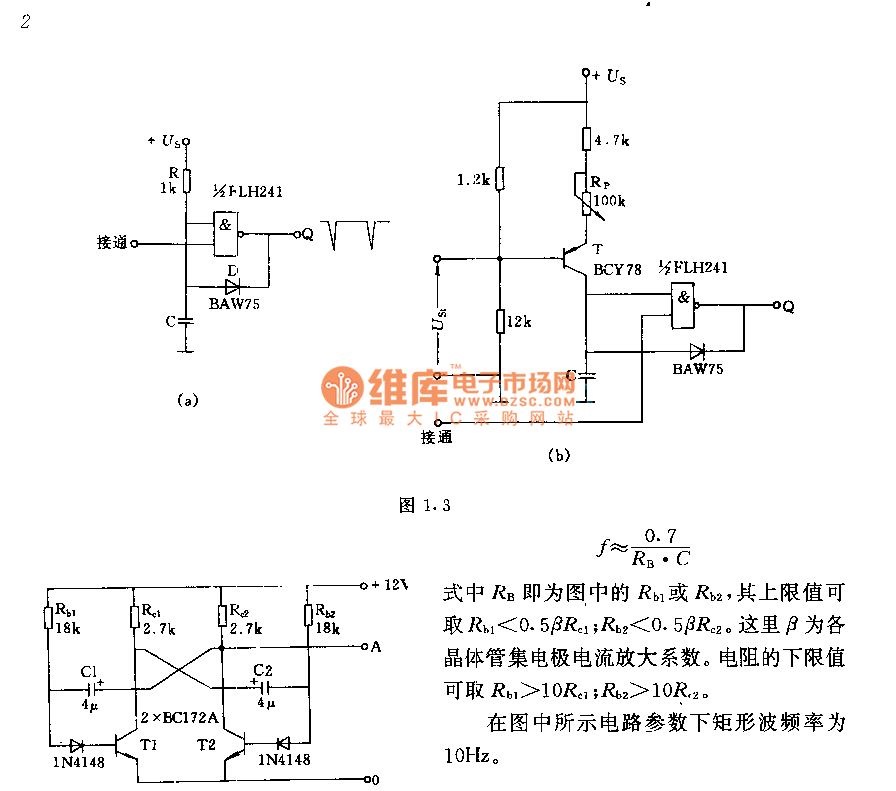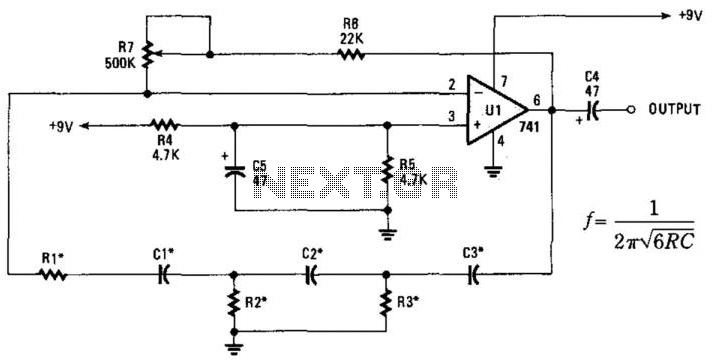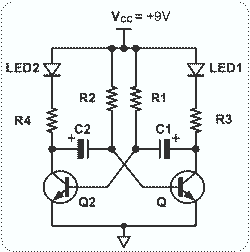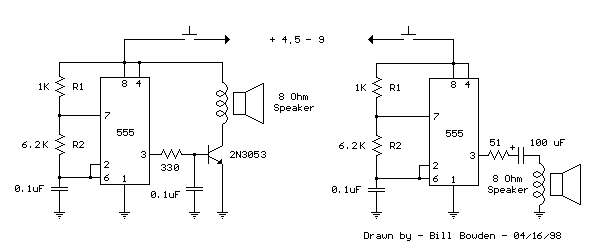
555 Astable oscillator
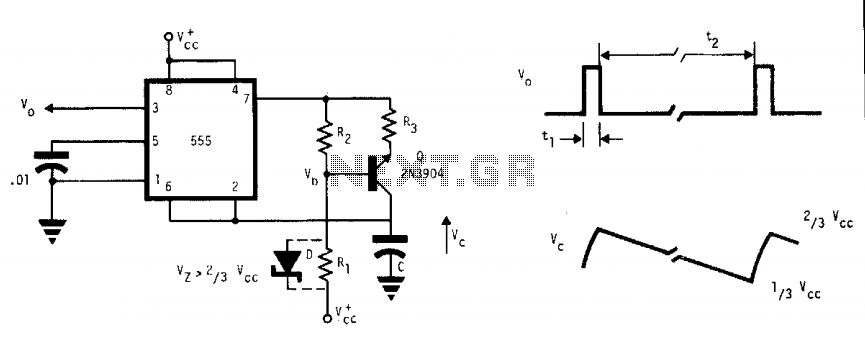
This free-running multivibrator utilizes an external current sink to discharge the timing capacitor, C. As a result, the interval can easily be 1000 times the pulse duration, t1, which defines a positive output. The voltage across the capacitor, V, exhibits a negative-going ramp with an exponential rise during the pulse output periods.
This circuit functions by generating a continuous square wave output, where the timing capacitor C is charged and discharged in a cycle determined by the external current sink. The duty cycle of the output is inherently low due to the nature of the timing mechanism. The external current sink plays a crucial role in controlling the discharge rate of the capacitor, which in turn influences the pulse duration and frequency of the output signal.
In operation, when the timing capacitor C charges, it reaches a threshold voltage that triggers the output to go high. During this period, the voltage V across the capacitor rises exponentially. Once the external current sink is activated, it discharges the capacitor, causing the voltage to drop rapidly, resulting in a negative-going ramp. The timing of this cycle can be adjusted by changing the values of the capacitor and the resistive components associated with the current sink.
The design of this multivibrator is particularly useful in applications where precise timing intervals are critical, such as in clock generation for digital circuits or in timing applications where low duty cycles are acceptable. The ability to achieve a wide range of pulse durations by manipulating the external components allows for versatility in various electronic applications.This free-running multivibrator uses an external current sink to discharge the timing capacitor, C. Therefore, interval ^ may easily be 1000 the pulse duration, t1( which defines a positive output. Capacitor voltage, V^, is a negative going ramp with exponential rise during the pulse output periods. This as is has low duty cycle. 🔗 External reference
This circuit functions by generating a continuous square wave output, where the timing capacitor C is charged and discharged in a cycle determined by the external current sink. The duty cycle of the output is inherently low due to the nature of the timing mechanism. The external current sink plays a crucial role in controlling the discharge rate of the capacitor, which in turn influences the pulse duration and frequency of the output signal.
In operation, when the timing capacitor C charges, it reaches a threshold voltage that triggers the output to go high. During this period, the voltage V across the capacitor rises exponentially. Once the external current sink is activated, it discharges the capacitor, causing the voltage to drop rapidly, resulting in a negative-going ramp. The timing of this cycle can be adjusted by changing the values of the capacitor and the resistive components associated with the current sink.
The design of this multivibrator is particularly useful in applications where precise timing intervals are critical, such as in clock generation for digital circuits or in timing applications where low duty cycles are acceptable. The ability to achieve a wide range of pulse durations by manipulating the external components allows for versatility in various electronic applications.This free-running multivibrator uses an external current sink to discharge the timing capacitor, C. Therefore, interval ^ may easily be 1000 the pulse duration, t1( which defines a positive output. Capacitor voltage, V^, is a negative going ramp with exponential rise during the pulse output periods. This as is has low duty cycle. 🔗 External reference
Warning: include(partials/cookie-banner.php): Failed to open stream: Permission denied in /var/www/html/nextgr/view-circuit.php on line 713
Warning: include(): Failed opening 'partials/cookie-banner.php' for inclusion (include_path='.:/usr/share/php') in /var/www/html/nextgr/view-circuit.php on line 713
